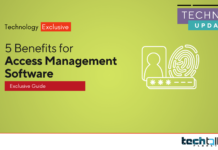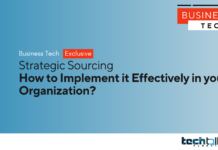Identity resolution platforms integrate consumer identifiers to create an accurate and addressable persistent profile. This provides the basis for marketing, analytics and compliance.
This IAM system monitors the user account as it remains in session and detects unusual behavior that could indicate an account takeover. It also manages passwords and can provide single sign-on to many systems.
- Access Control
One of the most important security functions in any organization, access control (also called authorization), is the process that grants network entities access to data, applications, services, and devices based on their attributes. Unlike authentication, which verifies the identity of an entity on your system, authorization is a yes or no decision.
The level of access granted depends on your security needs and organizational culture. Organizations that require the highest levels of confidentiality tend to choose stringent models such as MAC, while those that favor greater flexibility will likely opt for RBAC and DAC systems.
An IAM solution can provide access control in various ways, including dynamic policies that respond to threats in real time. It can also help you enforce privileged access management best practices and implement just-in-time access, which allows users to temporarily elevate privileges for certain tasks without granting them full access rights.
IBM Security Identity and Access Management is a highly secure IAM solution that supports both on-premises and cloud environments. Its strong authentication capabilities can reduce the time between when a new employee begins work and when they have access to enterprise resources from days to minutes.
At the same time, its self-service features improve productivity and security. This IAM tool can also monitor your systems to discreetly verify user accounts and their activity as they remain in session, ensuring that no changes have been made without your knowledge.
- Identity Management
Identity management products and applications manage the identifying attributes of users or network entities that require access to enterprise applications. These include the technologies that verify a user’s identity while controlling permission authorizations.
When someone attempts to log in to a system, the identity management tools compare the login information against its record of what each authorized user can do or has access to. It also helps with onboarding new employees and partners and offboarding those that no longer need access to an organization’s systems.
A key feature of this type of security is an “identity resolution” process that eliminates the need for people to remember multiple login credentials. With unified identities, people can use a single ID to log in to different systems at work, providing an improved user experience.
Several vendors make identity management software, including Microsoft Azure Active Directory, Oracle Identity Cloud Service, and IBM Security Identity and Access Assurance. The IBM system, for example, is good at working discreetly behind the scenes without causing problems with the systems’ performance and user experiences.
It works on various platforms and can handle VPN credentials, as well. It also does a good job of tracking and monitoring user accounts and spots anomalous behavior that could indicate account takeovers.
- Identity Analytics
Identity analytics is the key to detecting access-related risks. These tools can quickly spot over-provisioned users, unused entitlements, orphaned accounts and other critical risk factors to strengthen your IAM programs and reduce the potential for cyberattacks.
Privileged account management is a core part of any IAM system that helps to protect those accounts with enterprise-grade password security and privileged access management (PAM). This can make it harder for hackers to gain access by ensuring that a hacker must have the right credentials and login information to break into a privileged account. These systems can also help keep these accounts online, even if they are attacked by attackers who want to brute force the system to get to your sensitive data or designs.
This IAM solution from IBM can monitor user accounts when they log in and are still in session. It can detect if any of these accounts are compromised and will alert the administrator to a breach. The tool can also discreetly verify users’ identities and change their privileges if necessary.
Another benefit of this IAM solution is that it can manage a wide range of applications and can interface with other systems and databases. This makes it easy to set up an onboarding process that automatically creates a user’s account and provides them with the permissions they need to complete their work.
- Reporting
Cybercriminals aim to appear like legitimate users within an organization, enabling them to access the data and resources they need for their attack. Mastering digital identity is a core security initiative every enterprise should have in place to combat this threat.
In this course, you’ll learn to leverage the power of identity and insight for personalized experiences.
Understand how to manage the full worker lifecycle across multiple environments with a robust, flexible, and integrated platform. In addition, you’ll be able to simplify and automate approval routing of non-standard access requests and empower users to manage their own data updates, password resets, and other tasks to reduce the burden on internal IT teams.
Bottom Lines
Finally, you’ll be able to ensure you’re ready for any audit with platform-wide reporting. This course is designed for administrators and technical consultants planning, implementing, and supporting Microsoft Identity Manager and Microsoft Forefront Identity Manager 2010. Participants should have a basic understanding of Active Directory and SQL.



















































